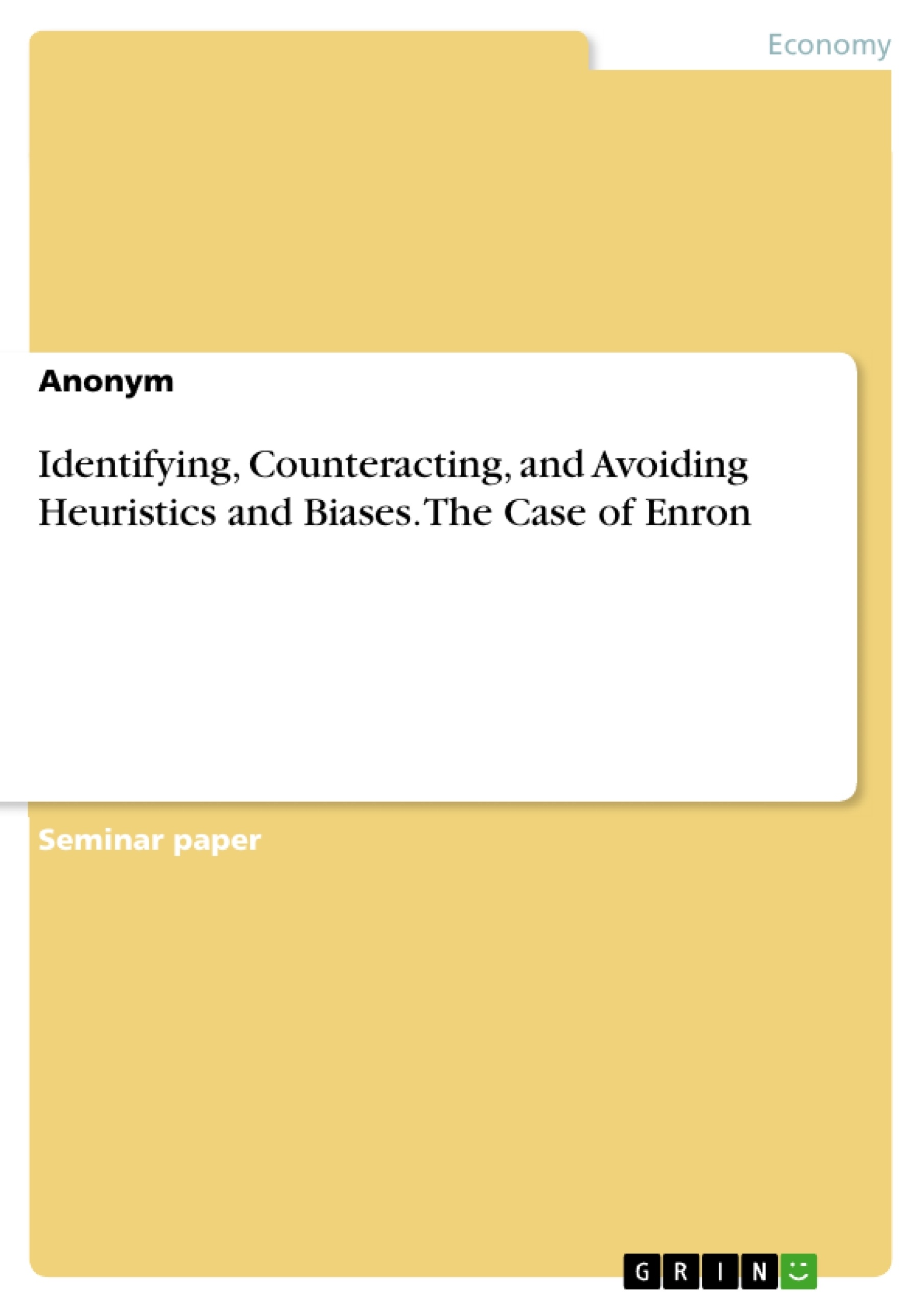In the ideal world, any state or organisation’s governing body should act in the interest of society at large to achieve the best levels of wellbeing possible. Where problems and gaps are identified, it is necessary to carefully design the necessary interventions, which will eventually encourage people to behave in ways that are beneficial to the organisation or community they belong to.
'With great power comes great responsibility’ is a phrase, which encompasses public scandals such as the ones of the Enron Corporation. Given that human beings (homo sapiens) are psychologically susceptible to fall victims of heuristics and biases, negligence, or even abuse of power, decision-making processes, and the resulting outcomes tied to them are not always desirable.
Enron capitalised on the opportunities deriving from its strategic public relations exercises of lobbying in favour of deregulation, as well as pushing its brand as Fortune’s Most Innovative Company for six years in a row. These kept the company afloat and distracted the regulatory bodies as well as the public from noticing any wrongdoings. Senior management framed the Enron brand and business as ‘ethical’, ‘collaborative’ and ‘considerate’. It appears that the governing bodies and citizens in California trusted Enron blindly and, holistically, decided by availability, that is, upon allowing for the company to operate n the energy markets, they relied on the immediate option.
Inhaltsverzeichnis (Table of Contents)
- Introduction
- Heuristics and biases
- Counteracting heuristics and biases; applying measures to avoid them
- Concluding remarks
Zielsetzung und Themenschwerpunkte (Objectives and Key Themes)
This text aims to analyze the Enron scandal, focusing on the role of heuristics and biases in the company's downfall. It explores how Enron's management utilized these cognitive shortcuts to manipulate stakeholders and create a misleading perception of their operations. Additionally, the text examines strategies for counteracting heuristics and biases in decision-making, highlighting the importance of critical thinking and ethical awareness.
- Cognitive biases and their impact on decision-making
- Enron's strategic use of heuristics and biases to manipulate public perception
- The influence of framing effects on individual and organizational behavior
- The role of choice architecture in shaping choices and influencing outcomes
- Strategies for counteracting heuristics and biases to promote ethical decision-making
Zusammenfassung der Kapitel (Chapter Summaries)
- Introduction: This chapter introduces the concept of heuristics and biases and their relevance to understanding the Enron scandal. It emphasizes the need for ethical behavior and the dangers of cognitive shortcuts in decision-making processes. The author provides a background on the case of Enron, highlighting the company's strategic use of public relations and lobbying to influence public perception.
- Heuristics and biases: This section delves into specific cognitive biases that influenced the actions and decisions of both Enron's management and the public. The author discusses how these biases, such as framing effects, choice architecture, and the halo effect, contributed to the company's fraudulent activities. He also cites the work of Daniel Kahneman to illustrate how individuals rely on intuitive judgments and shortcuts, which can lead to flawed decision-making.
- Counteracting heuristics and biases; applying measures to avoid them: This chapter explores strategies for mitigating the negative effects of heuristics and biases. It emphasizes the importance of developing critical thinking skills, seeking diverse perspectives, and cultivating ethical awareness. The author suggests implementing measures to promote transparency, accountability, and responsible decision-making within organizations.
Schlüsselwörter (Keywords)
The text explores the themes of cognitive biases, decision-making, ethical behavior, corporate governance, corporate fraud, public perception, and corporate social responsibility. It focuses on the Enron scandal as a case study to illustrate the impact of heuristics and biases on individual and organizational behavior. Key terms include framing effects, choice architecture, the halo effect, cognitive shortcuts, System 1 and System 2 thinking, and the role of ethical awareness in mitigating the risks associated with heuristics and biases. The text emphasizes the importance of critical thinking and ethical decision-making in navigating complex organizational landscapes.
- Quote paper
- Anonym (Author), 2018, Identifying, Counteracting, and Avoiding Heuristics and Biases. The Case of Enron, Munich, GRIN Verlag, https://www.grin.com/document/1446240



